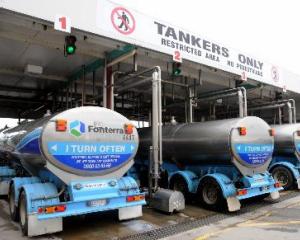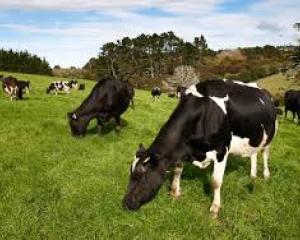For a long time, dairy co-operative Fonterra was regarded as the shining light of the New Zealand economy.
From a politically approved birth, Fonterra grew into a global giant of milk supplies, pushing out from this country far and wide. The dairy group has dallied with the Americas and Asia, established a beach head into Australia and has a strong presence in parts of Europe.
But last week, worrying signs about the future of the co operative emerged. Chief executive Theo Spierings says he is determined not to allow the dairy co operative to fall below its current 87% share of the New Zealand milk pool, despite increased competition for supply.
Just how he hopes to achieve this is yet to be determined, with Chinese owned operators now actively cutting into Fonterra's share of the market by paying a higher price for milk from dairy farmers.
The uncertain future of the dairy sector was a key theme in KPMG's Agribusiness Agenda released last week.
New processing operations are emerging, particularly from well capitalised international companies. This has the potential to lure farmers away from their existing co operative relationships and change the value generated by the New Zealand milk pool permanently.
The report goes on to say rising competition raises questions about the future structure of the industry and the necessary regulatory framework.
Supply has outgrown ability to add value to milk, resulting in more product being sold through commodity channels. Importantly, the report says the relevance of the New Zealand milk pool to global supply is declining as countries grow domestic supply and export competitors increase production.
Mr Spierings went public after widespread criticism of the group's management performance following a weak half year financial result, lower forecast dairy payout and anecdotal reports many of its 10,500 suppliers are seeking to leave and supply independents.
A major review of the business has been launched and may lead to 1500 head office and support function staff being laid off because it wants to redirect more staff into sales and in market roles to help drive up returns. Fonterra now employs 11,500 staff in New Zealand and 18,000 worldwide.
For a comparison with the problems facing Fonterra, attention can be turned to the troubled state owned Solid Energy, which wasted millions of dollars on projects which, in retrospect, were doomed to fail.
Money was wasted on a flashy headquarters building and forecasts of rising coal prices were so out of tune with the rest of the market as to beggar belief.
While the world was recognising the amount of iron ore being used in China for construction was falling, meaning less coal was required, Solid Energy kept lifting its expectations - with the consequences of a collapse, job losses and the replacement of the board by the shareholding Crown ministers.
Fonterra, and the majority of its suppliers, have followed the same formula. As global supply fell, prices rose and there was a belief of better to come.
Now, it is likely incomes for many dairy farmers will halve and some may not be able to repay their debt to financiers.
Of course, those indebted farmers are going to look for a better return for their hard work and capital investment. That is as it should be.
Mr Spierings says Fonterra is looking at the quality of the top line and what goods are sold and the gross margin levels and operating expenses.
Fonterra is doing what it can to create value. Unfortunately for Mr Spierings, so is the rest of the world.
While many scenarios were suggested in the KPMG report, few had Fonterra retaining more than 70% of total supply, and most had between 15 and 20 companies picking up milk within the next 10 years.
If it wants to survive, Fonterra needs to convince its suppliers and shareholder funds holders to spend money on the investment required to drive the value added side of the business.
Claims the current structure is working in a tough market do not make the cut as mobile and cash rich overseas investors eye the New Zealand market.






